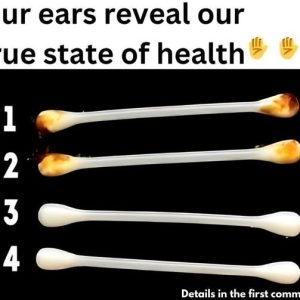The onset of menstruation, or menarche, among girls in the United States is occurring at a younger age than in previous generations. This rise is being seen particularly among racial minority and lower-income individuals. This concerning trend has prompted scientists to delve deeper into understanding the factors influencing this shift.
When Are Girls Getting Their First Period: The Study
There has been a concerning trend over the last few decades in relation to the age at which girls are starting menses, aka getting their first period. Girls are experiencing menarche at younger and younger ages, and their periods are taking longer to become regular. This is an important issue as it is a red flag regarding the health of women and girls, and has potential consequences for their future health.
To shed light on this phenomenon, researchers utilized the Apple Women’s Health Study dataset, comprising 71,341 participants who self-reported their age at menarche, race, and socioeconomic status. The study divided participants into five age brackets ranging from 1950 to 2005 and categorized early, very early, and late menarche. Very early refers to younger than 9 years of age, early being younger than 11, and late being 16 and older. Additionally, a subset of participants reported the time that it took for their menstrual cycles to become regular. There was a significant decrease in the number of girls whose periods became regular within two years of menarche. Furthermore, another subset provided their Body Mass Index (BMI) at the age of menarche, in an attempt to identify trends that are correlated between these two data sets. This extensive data analysis provided valuable insights into the changing landscape of menarche in the US. (1)
The Study Results
The findings revealed a significant correlation between the participants’ birth year and the age at menarche. Younger generations exhibited a decrease in the average age at menarche as compared to older cohorts. This means that girls today are starting their period at increasingly younger ages as compared to girls in previous decades. Moreover, the time taken for menstrual cycles to become regular increased as the birth year advanced. Again, this means that while girls today are getting their periods younger, it is taking them longer for their periods to become regular. Notably, the study highlighted a rise in early and very early menarche rates among girls born from 2000-2005. These trends were observed across all sociodemographic groups but were most pronounced among racially diverse and economically disadvantaged participants.
What Is Causing This Early Period Onset?
The study found various factors that seem to be affecting the age at which girls are beginning menses. These include dietary patterns, psychological stress, childhood trauma, and environmental factors such as endocrine-disrupting chemicals and air pollution. The most influential factor, however, was BMI. The study underscored the role of BMI at the age of menarche as a major contributing factor to early menarche, with childhood obesity emerging as a significant risk factor for premature puberty.
Apart from the age of onset, these factors can potentially influence other aspects of menstruation. This includes the time taken for menstrual cycles to regularize, the heaviness or pain associated with periods, and the age at which menopause occurs. This is important as it has a huge impact on the health and longevity of women and girls.
The Danger of Early Menses
Besides it, meaning an increased number of years in which a woman has to deal with a monthly period, early menses have a direct impact on a woman’s health. It is associated with an increased risk of developing breast cancer, ovarian cancer, and endometrial cancer. It also increases the risk of developing heart disease and stroke. Early menses also have a direct impact on a woman’s fertility. It is associated with an increased risk of developing polycystic ovary syndrome (PCOS), which can cause infertility and other health problems. (2)
Why does early menses increase cancer risk? This is because it increases the amount of time that a woman is exposed to estrogen, which can stimulate the growth of these types of cancer cells. Estrogen is a hormone that is produced by the ovaries and adrenal glands in women. It is also produced by fat cells in both men and women. The more fat cells a person has, the more estrogen they produce. The more estrogen a woman is exposed to, the higher her risk of developing breast, endometrial and ovarian cancers.
What Can Girls and Women Do to Combat This Issue
In light of these findings, girls and women can take proactive steps to mitigate the impact of early menarche. Living a healthy lifestyle through balanced nutrition and regular exercise can help manage weight and potentially delay the onset of menstruation. Additionally, addressing stress levels, ensuring adequate sleep, and minimizing exposure to environmental factors such as endocrine-disrupting chemicals can positively influence menstrual health. All of this will help to lower the risk of developing diseases and illnesses associated with early menarche.
What Do We Need From the Government and Regulating Bodies?
Of course, women and girls are not the only ones responsible for protecting their health and combating this issue. The government and regulating bodies should take action to address the issue of early menarche. They can do this by:
Implementing policies that promote healthy lifestyles, including balanced nutrition and regular exercise.
Ensuring access to affordable, quality healthcare services for all women.
Regulating the use of endocrine-disrupting chemicals in consumer products.
Providing education and support for girls and women who are experiencing early menarche.
Supporting research on the causes of early menarche, including studies that examine the effects of environmental factors such as endocrine-disrupting chemicals.
Working on policies to improve environmental conditions, including improvement of air pollution, and the regulations of chemicals allowed on crops, in water, in food products, cleaning products, clothing, and more.
The Bottom Line
As research continues to unravel the complexities surrounding early menarche and its health implications, it is imperative to prioritize menstrual health research and invest in strategies to address this growing concern. By raising awareness, fostering healthy behaviors, and advocating for tailored interventions, girls and women can navigate the challenges posed by early menarche and strive toward optimal menstrual health and overall well-being.





